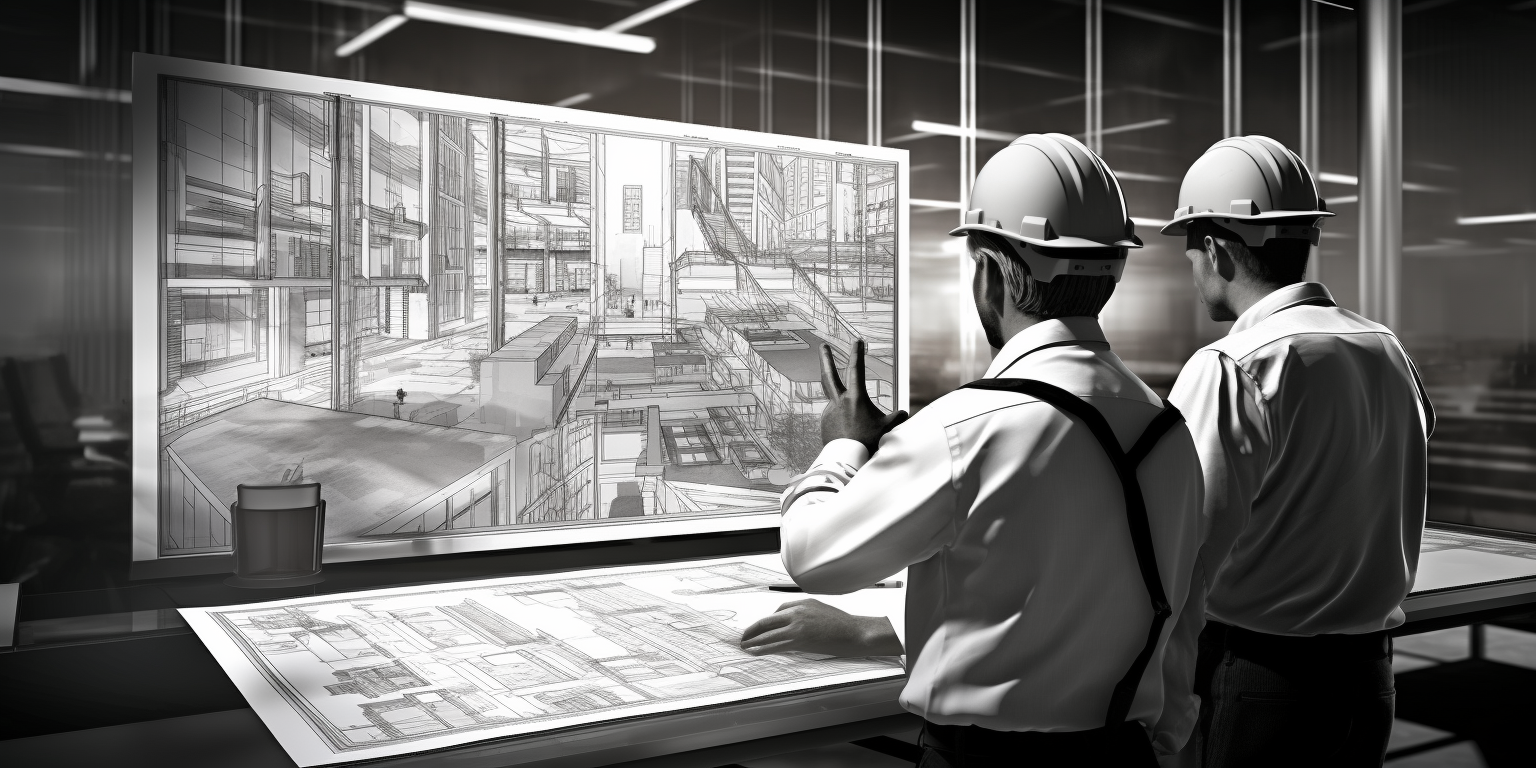Engineering Drawing Management Software is a specialized tool for organizing and controlling the immense volume of engineering drawings generated during the lifecycle of a product. These powerful systems are designed to ensure consistency, accuracy, and the traceability of complex technical drawings that underpin the creation and maintenance of machinery, buildings, and other engineered products. They facilitate efficient revisions, version control, and support compliance with industry standards.
Essential to a wide array of sectors, including manufacturing, aerospace, construction, and automotive, Engineering Drawing Management Software uniquely caters to the nuances of technical draftsmanship. Engineers and project managers rely on this software to maintain a centralized repository of multidisciplinary designs. Furthermore, it automates workflows and approval processes, minimizing human error, and accelerates time-to-market for new products or features.
In today’s demand-driven market where modifications are incessant, an Engineering Drawing Management Software stands as an invaluable resource. It delivers immediate access to vital documents and provides integration capabilities with other business systems, enabling holistic project oversight. The software’s central role in managing data ensures that every team member is aligned with the most current project specifications, fostering collaboration and driving project success.
Content:
- Efficiency Quantified: Evaluating the innovative advancements of engineering drawing management software
- Navigating the graphical ocean: The rise of engineering drawing management software
- Behind the scenes: An educational guide to understanding engineering drawing management software
- Modern Technology meets classical engineering: Evaluating engineering drawing management software
- Ideal engineering design: Harnessing the power of dedicated drawing management software
In an era where engineering perfection is non-negotiable, the cry for advanced organizational tools reverberates across industries. As project intricacies escalate, Engineering Drawing Management Software emerges as the turret of modern design workflows. In this context, exploring its pivotal contribution to the meticulous world of engineering management bears profound significance.
Securing the integrity and accessibility of engineering drawings is synonymous with ensuring project success. That’s where the prowess of a focused management software sparkles: by bestowing precision and clarity amidst a labyrinth of lines and symbols that constitutes the lifeblood of engineering projects. In such a high-stakes realm, even the minutest folio carries the weight of a pivotal decision, sketching the silhouette of innovation.
The intricate dance between evolving design realities and stern deadlines demands a partner that’s as dynamic as it is authoritative. Experience dictates that an adept Engineering Drawing Management Software tangibly transcends the archaic confines of file cabinets and congested hard drives. Our upcoming article delves into how integrating such software maximizes efficacy, nurtures collaboration, and ensures the sustainability of information through the tempest of innovation and change.
Efficiency Quantified: Evaluating the innovative advancements of engineering drawing management software
Engineering drawing management software has revolutionized how we handle complex blueprints and schematics. Its innovative features streamline the process of managing vast numbers of documents. This software reduces the time spent on searching for specific drawings, thanks to advanced indexing and search capabilities. With version control features, it’s easier to track changes and maintain the integrity of designs.
Advancements in collaborative tools within this software have been particularly noteworthy. Team members can now view and edit drawings simultaneously, leading to a faster iterative design process. Commenting features keep discussions on specific aspects of a design within the context of the drawing itself, greatly enhancing communication. All these advancements minimize errors and optimize project workflow.
Understanding the impact of this software on project timelines demonstrates its value. The efficiency brought about by engineering drawing management tools is quantifiable in reduced project durations and costs. Teams can execute projects with a high level of precision, which translates to savings in both materials and labor. This efficiency is a critical factor in staying competitive in today’s fast-paced market.
Additionally, these systems offer better compliance and standardization across engineering projects. They ensure that everyone adheres to the same standards, which is crucial for quality assurance. The software’s ability to align with industry regulations drastically reduces the risk of non-compliance penalties. This is a substantial benefit for engineering firms operating in tightly regulated sectors.
In conclusion, engineering drawing management software provides a robust framework supporting the intricate needs of modern engineering. Its ability to deliver efficiency in document management is integral for the success of engineering projects. As the software continues to evolve, we can anticipate even more groundbreaking features that will further enhance project management and execution.
Behind the scenes: An educational guide to understanding engineering drawing management software
Understanding engineering drawing management software begins by exploring its core functionality. These systems are engineered to manage drawings throughout their life cycles, from creation to archiving. By centralizing files, they ensure that users can quickly locate the latest versions of their documents, reducing redundancies and enhancing productivity.
The integration capabilities of such software cannot be overstated. They work seamlessly with other project management tools, providing a unified platform from which to control multiple aspects of a project. This integration ensures that changes in a drawing can trigger updates in related documents, keeping all project facets in sync. Such seamless integration optimizes the flow of information across project teams.
Educational resources for these systems are abundant, aiming to flatten the learning curve for new users. Vendors often provide detailed documentation, video tutorials, and customer support. Furthermore, many organizations offer training to ensure that teams can leverage the full potential of the software. A well-informed user base means fewer mistakes and a more efficient use of the application.
The behind-the-scenes operations of the software include backup and recovery functions. Protecting the data against loss is a critical feature, as the cost of recreating engineering drawings is significant. Regular backups and secure cloud storage options are among the measures employed by drawing management systems. Business continuity is, thus, enhanced by built-in resilience.
In conclusion, engineering drawing management software is a multifaceted system designed to address the specific needs of the engineering sector. Its features streamline workflow, promote collaboration, and ensure data security. Educational resources play a vital role in user adoption, as they demystify the capabilities of these systems. Behind the scenes, these tools support the complex ecosystem of design management, central to the success of engineering projects.
Modern Technology meets classical engineering: Evaluating engineering drawing management software
The intersection of modern technology and classical engineering is embodied in the rise of engineering drawing management software. Classical engineering principles, grounded in precision and meticulous planning, are enhanced by digital solutions. The result is an efficient and accurate approach to managing drawings, which are the lifeblood of any engineering project.
One of the main reasons for the successful marriage between technology and engineering is the adaptability of the software to diverse practices. Regardless of the engineering discipline, be it civil, mechanical, or electrical, drawing management systems provide custom solutions that cater to each sector’s unique needs. The flexibility extends to compatibility with various CAD programs, making it a versatile solution.
Precision in engineering is non-negotiable, and this software aids in maintaining it. By ensuring that all team members reference the correct versions of drawings, software minimizes the risk of errors. Digital accuracy surpasses what was possible with paper drafts. As a result, not only is the design process streamlined, but the chances of flaws in the final construction or product are significantly reduced.
Sustainability is an important consideration in contemporary engineering practices. By facilitating a paperless environment, drawing management software reduces the carbon footprint of engineering firms. Digital storage and electronic sharing eliminate the need for physical copies, thereby contributing to environmental conservation. This ecological aspect is increasingly becoming a deciding factor for companies evaluating software options.
In summary, engineering drawing management software represents a bridge between the time-honored rigors of classical engineering and the efficiencies of modern technology. Its customization capabilities, precision-enhancing features, and ecological benefits make it a compelling choice for industry professionals. As engineering evolves, this software will undoubtedly continue to be an invaluable ally, driving the industry toward a more innovative and sustainable future.
Ideal engineering design: Harnessing the power of dedicated drawing management software
Ideal engineering design relies on precision, collaboration, and efficiency, all of which are facilitated by dedicated drawing management software. These digital tools enable a more systematic approach to the management of design documents, allowing engineers to focus more on the creative aspects of their work. They merge the complex needs of design with user-friendly systems that improve overall project outcomes.
Drawing management software allows for robust data manipulation and analysis, offering engineers deeper insights into their designs. This analytical power enables better decision-making and a smoother progression from conceptual designs to finalized projects. Moreover, the software automates routine tasks, freeing up time for engineers to tackle more complex challenges that demand human expertise.
Data centralization is another core advantage of drawing management software. With all drawings stored in a centralized database, team members can access the information they need from anywhere, at any time. This accessibility is especially crucial for projects with teams dispersed across various locations. Such accessibility also bolsters a firm’s ability to handle remote work arrangements, a necessity in the contemporary workplace.
Security and control are paramount in managing proprietary designs. Drawing management software provides layered security protocols, ensuring that sensitive information remains protected. Access control features allow managers to set permission levels, ensuring that only authorized personnel can view or modify certain documents. These security measures are vital in preventing data breaches and safeguarding intellectual property.
In conclusion, dedicated drawing management software is a key component in achieving ideal engineering design. It supports the precision, collaboration, and efficiency needed to bring sophisticated designs to life. By enabling better data management, enhancing accessibility, and providing robust security, such software empowers engineers to deliver superior projects. As the field of engineering continues to progress, the reliance on such advanced tools will only increase, solidifying their role in the fabric of design excellence.



